- Expert advice/
- Invites & paper/
- Invitations/
- How Much Do Wedding Invitations Cost on Average?
- Invitations
How Much Do Wedding Invitations Cost on Average?
Find average wedding invitation costs with our pricing breakdown guide. Explore pricing factors to consider including paper types, printing methods, and more.
Last updated February 5, 2024
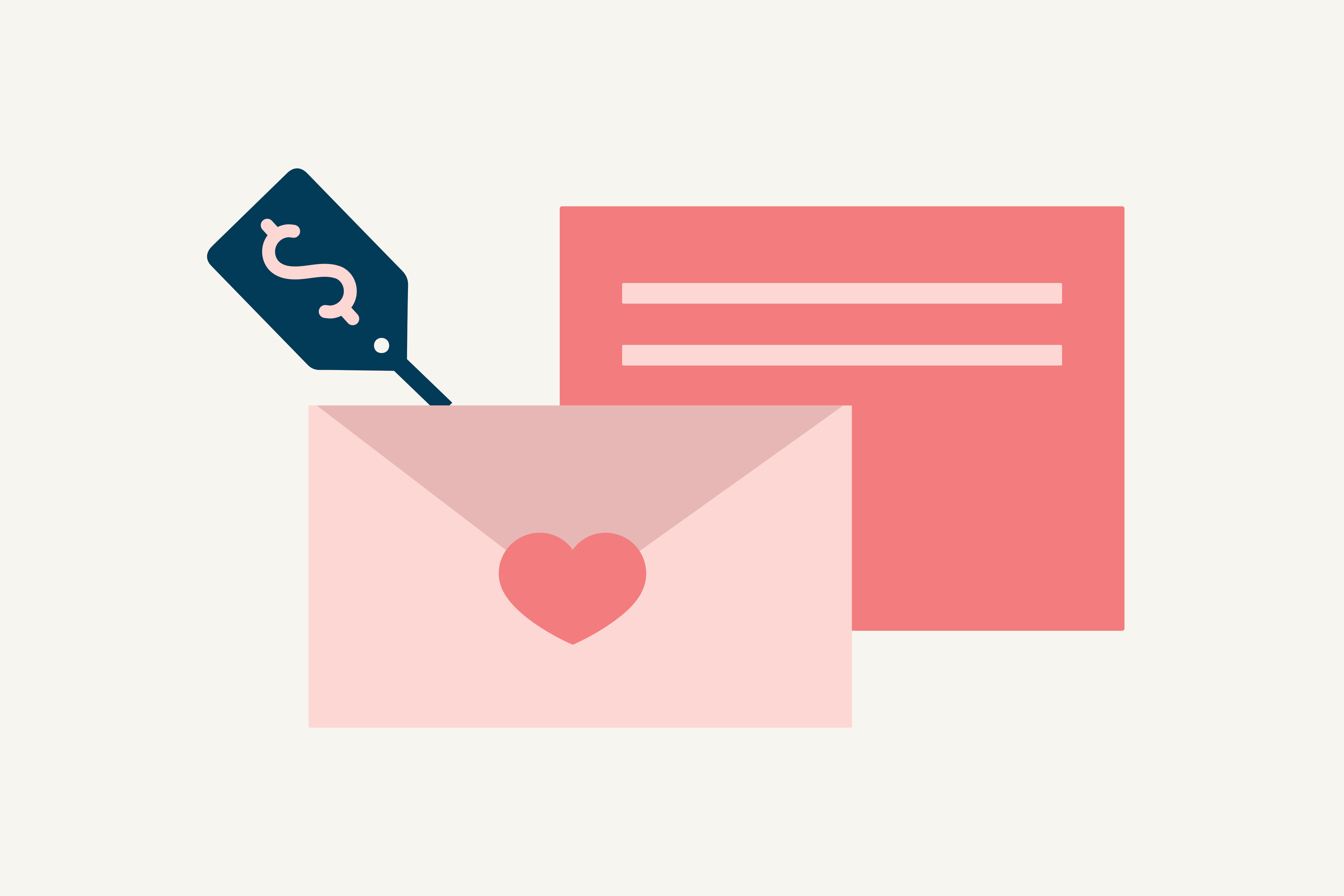
The +1 Pledge
We’re showing the world some extra love by planting a tree for every paper order placed on Zola. Read more about our +1 Pledge here.
You’ve set a date, chosen a venue, and set up your wedding website. Now it’s time to consider more formal methods for announcing your wedding’s date and location to your intended guests—enter wedding invitations! From custom-designed letterpress cards to simple DIY postcards, wedding invitations run the gamut when it comes to style, formality, and price. Since now’s the time in your planning when setting your wedding budget is critical, you’re probably wondering how much you should plan to spend on your wedding invitations. Read on to have all your questions answered about wedding invitations costs and how to find beautiful, affordable invitations that match your style.
What is the Average Cost of Wedding Invitations?
On average, a couple spends between $300 and $700 for 100 wedding invitations and response cards, according to the Wedding Report. Trying to pinpoint the average cost of wedding invitations is like trying to determine how much it costs to go out to dinner: there are tons of factors that can influence the price. From where you’re buying your invitations, to the materials and designs you’ve chosen, to how many invitations you need to order, many small decisions can add up to a big difference in total costs. The amount that one couple spends on their invitation suite can double or even triple when compared to another couple’s spending.
Curious to know how that wide range of pricing breaks down across different invitation shopping options? Check out these approximate starting-point costs for a set of 100 invitations, envelopes, and response cards at the following types of sellers:
Graphic Design Studio: $1,000+
For totally custom wedding invitations created by a design studio, expect to pay a premium price tag. Invitations designed just for you might include a custom logo, monogram, illustration, hand- calligraphy, or other graphic element, and will generally come with a design consultation followed by a series of proofs for you to approve (so you’re guaranteed to get exactly what you want).
Stationery Shop: $700+
Slightly less pricey but still a considerable expense, working with a local stationery shop to design your invitations can allow you to see a number of different invitation suites from various designers all under one roof. As with all invitation purchases, the greater the embellishments and the more enclosures you add to your order, the higher the total cost will be.
Online Shop: $350+
There are many incredible online options these days for high-end wedding invitation designs at affordable prices. Buying a full invitation suite online has become popular with couples due to the range of choices and degree of customization they can find while still sticking to their budgets—not to mention the convenience of being able to order your invites from your couch.
DIY/Print At Home: $150+
For artistic types or those on very tight budgets, designing your own wedding invitations is possible (with the help of an easy template, a few proofreading helpers, a good printer and an even better paper cutter). Just be sure you have the time, patience, and skills to tackle DIY invitations before you commit to such a large project such a large project or consider outsourcing the printing and cutting tasks to a local print shop.
Factors in Wedding Invitations Costs
If you’re trying to stick to your wedding invitation budget (or even set one in the first place), you should understand which factors will affect your overall invitation costs. While the average cost of wedding invitations is between $300 and $700, consider these things that affect the bottom line when making your invitation selections.
1. Invitation Quantity
While perhaps obvious, it bears stating outright that the larger your guest count, the more invitations you’ll need to send—and since invitations are priced per card, your costs will increase with the quantity you order. All the more reason for trimming down that guest list if you’re looking to cut costs!
2. Degree of Customization
As you learned above, the more custom your invitations are, the more money you’ll pay for them. Bespoke custom wedding invitations that are designed just for your wedding, while completely lovely and one-of-a-kind, will cost you considerably more due to the degree of time, labor, and consultation they require (before you even add in upgraded printing and materials).
3. Printing Method
While some wedding invitation printing methods are pretty basic (such as downloading an image and hitting the “print” button), some are centuries-old art forms that require special training, machinery, and expensive materials. The more time- and labor-intensive the printing method, the more your invitations will cost.
4. Decorative Elements
Foil printing, an embossed monogram, rounded corners, recycled paper…there are tons of decorative elements you can use to personalize your invitations. Since these pieces of paper really set the tone for your wedding’s style, many couples want them to make a distinctive statement. But like most things, the more bells and whistles you add to your elegant wedding invitation design, the higher the price will climb.
5. Shipping Costs
Many couples forget to factor in the cost of actually mailing their wedding invitations. Postage per envelope is determined by its weight, so the heavier your invitation suite, the more you’ll have to spend on stamps. The current postage rate for a first-class letter weighing one ounce or under is $.55, meaning you’ll need to budget at least $55 for 100 envelopes. If your invitations are an unusual size (larger than 5x7 or square, for example) or heavier than one ounce, expect to pay more.
6. Envelopes
While many companies will include envelopes with your wedding invitation order, if you are DIYing your invites or gathering components from different sources, you might have to factor in the cost of buying envelopes. You’ll need envelopes large enough to hold your invitation plus any other inserts, including the response card and its (stamped) envelope. Envelopes can also be a site for extra decoration—envelope liners, a collection of beautiful stamps, wax seals, or calligraphed addresses can all add pizzazz to your envelope, as well as extra dollars to your total bill.
7. Calligraphy
On the topic of envelopes, be sure to think about how you want to address your wedding invitations. If you love the look of beautiful, hand-lettered calligraphy and want to make sure your guests’ envelopes arrive with their names artfully presented, then be sure to earmark money in your budget for this extra cost, which can run anywhere from $2 to $5 per envelope.
Wedding Invitation Printing Methods
We’ve ordered these printing methods from least to most expensive, so you can both understand and immediately recognize which terms you want to shop for when choosing your invitations.
Digital Printing
The most basic and inexpensive printing method, a digital file is printed from a printer. Digital printing is the most practical choice if your invitation design contains a lot of colors, since other methods require manually mixing inks.
Offset Printing
Offset (a.k.a. “flat”) printing results in a similar look to digital printing, but the process is more intensive. First the inks are mixed, and then the design is transferred from a metal plate to a rubber surface and run through a press. Since the paper doesn’t have direct contact with the metal plate, there are no impressions on the front or back of the paper (hence “flat” printing). Offset printing allows you to incorporate lots of colors that can be precisely adjusted.
Thermography
Similar in pricing to offset printing, thermography uses a special powder that, when treated with heat, fuses with wet ink to create textured, glossy lettering and images. The raised impression on the card looks like engraving (at a fraction of the cost), but the back of the card is not dented.
Letterpress
This technique literally “presses” an image onto paper using a raised, inked surface that leaves a reverse impression. Since your invitation lettering and graphics have to be arranged by hand in the mirror-image of the finished product, this technique is recognized as a more artistic (and hence pricier) kind of printing.
Embossing
Embossing is similar to letterpress in that the design is imprinted into the paper. Here, impressions are formed by pressing paper between etched metal plates (called “dies”) or molds, which creates a design that’s raised against the background. This printing technique is often done without ink to create textured accents, but colored ink or foils can also be used.
Engraving
Engraved invitations are the most expensive type of paper printing, this multi-step process involves first reverse-etching your invitation wording onto a metal engraving plate, then pressing the plate into the back of the your paper so that the message becomes raised on the front. Ink is then applied to the raised lettering. You can tell an invitation has been engraved because the back of the card will look dented (or “bruised”) where the plate was pressed.
Wedding Invitation Paper Types
Cotton Fiber
The most common and traditional type of paper for wedding invitations, often made from 100% cotton. The softness of cotton paper makes it excellent for letterpress, embossing, or engraving. Cotton paper is more expensive than most other types of paper, however.
Linen
Less expensive than cotton paper, linen paper still provides a very attractive finish and is available in heavyweight stocks. It’s slightly textured to mimic the surface of linen fabric, with finely textured lines that run horizontally and vertically across the page.
Felt Cardstock
This is a thicker style of paper that costs a bit more than standard paper due to its weight and its plush, velvety soft texture.
Handmade Paper
These specialty papers are made from plant fibers like hemp or cotton, and have a rough, textured finish. They have an “imperfectly perfect” look to them, and an environmentally-friendly choice.
Recycled Paper
Similar to handmade paper, recycled paper is made from recycled materials and plants, and is perfect for couples dedicated to having a low-impact, green wedding. Beware that recycled paper can be more costly than standard paper, however.
Matte
A type of paper finish, matte paper is coated to have a flat, non-reflective surface. It’s the opposite of glossy paper, and makes a great choice for thick, sturdy invitations that look crisp and clean.
Glossy
The opposite of a matte finish, glossy paper is reflective with an elegant sheen. It works great for making photographs pop, particularly when there are many colors, as it shows contrast better.
Bamboo
Softly textured, sustainable, and eco-friendly, bamboo paper is ideal for certain printing processes—such as letterpress, embossing, or foil printing—where you want images and words to stand out against the page.
Parchment
Cloudy, subtly translucent paper that is reminiscent of papyrus scrolls from ancient times, parchment paper gives your invitations an aged, antique look with its sepia tones and faded edges.
Rice Paper
While not actually made from rice, this type of natural paper is thin, soft, and delicate. It’s usually made with hemp or other natural fibers. It works best with letterpress printing, as it is too delicate to run through regular printers or other printing machines.
Vellum
Vellum is a fine, smooth, translucent paper with a frosted finish. It’s made from wood fiber and is sturdy enough to be printed on directly.
Glassine
Thinner than vellum, glassine is also translucent but with a slightly waxier finish. It’s very delicate and best used for overlays or envelope liners.
Laid
Laid paper is also made from wood fiber, but unlike vellum has a finely ribbed appearance and a textured, bumpy finish. It’s best used for decorative accents rather than for actual invitation printing.
Marbled
Made to mimic the veining of natural marble, marbled paper contains swirled colors and patterns. It can be used for invitations or envelope liners to dramatic effect.
Variegated
Subtly patterned, variegated paper contains hints of different colors placed irregularly throughout the page.
Pro Tip: you might see the terms “stock” and “tooth” when reading about paper types. Stock refers to a paper’s weight, specifically how much 500 sheets of a particular paper weighs—the higher the number, the thicker the paper. Tooth refers to a paper type’s texture; the more tooth a paper has, the rougher it is.
Wedding Invitation Accents
Blind Embossing
Using the printing technique of embossing without any ink or foil, blind embossing creates textured image or design that’s raised from (and the same color as) the paper.
Debossing
The same as blind embossing, but instead of creating a raised image, debossing creates an image or design that is recessed or sunken into the surface of the paper.
Foil Stamping
Using a heated die, metallic or pigmented foil is applied to the paper so it permanently adheres to it and adds a touch of glamour and sparkle.
Bevel Edge
Used to draw attention to a card’s thickness, the edges of an invitation card are slanted at 45-degree angle and often painted.
Deckle Edge
Popular with handmade papers, a deckle edge looks “torn” or rough, giving your invitation a touch of organic-chic elegance while also showing off the beautiful fiber of your specialty paper.
Rounded Corners
For an extra decorative touch, you can have the edges of your invitation (and even other enclosure cards, like your response card) rounded for a more modern or casual look. Usually this extra cutting step comes with a slight upcharge.
Die-Cutting
A process by which a pattern of cuts are made in the paper with a very precise blade. Die-cutting is often done around the border of an invitation or envelope edge to give it a lacey, scalloped, or other textured look.
Laser-Cutting
Using a laser instead of a knife, extremely intricate, fine cuts are made in the paper to create specific shapes, borders, or lettering. Laser-cutting leaves almost imperceptible burn marks on the back of the paper.
Backer
A backer is a thick piece of cardstock that is adhered to the back of the invitation, serving as a decorative background or frame for the card itself.
Belly Band
True to how it sounds, this is a literal band of paper, fabric, or ribbon that wraps around the invitation suite—the invitation, the response card and envelope, and any additional enclosure cards—to keep everything neatly contained.
Wax Seal
The traditional method of wax-sealing an envelope involves melting sealing wax (which comes in a variety of colors), applying melted wax to the envelope closure, and sealing it shut by pressing it with an engraved metal stamp. Nowadays you can also buy adhesive wax seals, which are essentially stickers that look a lot like the real thing.
Enclosure Cards
Enclosure cards are extra cards beyond the invitation itself. They can either invite guests to additional weekend events (such as the rehearsal dinner, welcome drinks, or a farewell brunch) or inform guests of useful information, such as reception details, maps and directions, or transportation and accommodations info. Enclosure cards are generally designed and printed in the same style as the invitation itself.
Envelope Liner
A decorative piece of paper used to line the inside of your envelopes, so that when guests open the flap, they are greeted with a colorful or printed interior surface that coordinates with your invitation design.
Tips for Budget-Friendly Wedding Invitations
1. Buy a Total Wedding Invitation Package
Shopping for all your affordable wedding invitations in one place can end up saving you money, not to mention give your total paper suite—from save the dates to invitations to thank you cards—a cohesive and beautifully matched look. By ordering everything from one place (like you can do on Zola), you can save time, stress, and cut down costs on shipping and processing fees.
2. Keep it Simple
As we’ve stated, the more intricate and complex your invitation design is, the more money you will spend. If you have your heart set on a certain design element, such as a shimmery metallic cardstock or a custom-embossed monogram, splurge for it but then go for a simple wedding invitation for the rest of your design. Or consider adding one fun embellishment—think gold foil, a colorful grouping of designer stamps, or a pretty ribbon belly band—to get that “wow” factor without having to verge into more costly territory, like letterpress printing or extra-heavy paper.
3. Order Extra at The Outset
Guest lists are chimerical things. Sometimes they shrink, but often they grow… and nothing is worse than having to order a whole new batch of invitations, envelopes, response cards, and response card envelopes for just a handful of add-on guests. Besides being time-consuming and tedious, this can cost you additional processing and shipping fees—plus some companies require orders in minimum quantities of 50 or 100 cards, so you might have to buy extra invitations you don’t need. Order 25 extra invitation sets with your initial order to avoid this extra money and hassle.
4. Lower Postage Costs
While it might not seem like much in the grand scheme of your wedding invitation budget, shipping costs can really add up—especially if your invitations require you to purchase extra postage beyond the standard first-class letter rate. You can lower your postage costs in two ways: keeping your invitations light and sticking to standard letter sizes.
The heavier your envelope, the more postage you’ll need to mail it, so opt for lighter- weight paper stock. Reducing the number of enclosure cards and embellishments (such as a heavy cardstock backing) can also help reduce your total envelope weight.
-
If you're trying to reduce your wedding invitation budget, stick to standard letter sizes to avoid an increase in postage fees
5x7 cards (called A7 in stationery terms) are a great option for wedding invitations that feel large and substantial, but can still be mailed with a single stamp. Irregular shapes, square envelopes, and anything larger than 5x7 will require extra postage.
5. Shop at Zola!
Yes, we know we are biased, but buying your wedding stationery at an online retailer like Zola is kind of a no-brainer. Not only are our invitations truly affordable, they come in tons of different styles from rustic wedding invitations to modern and vintage. We’re certain you’ll find a design you love, otherwise explore a variety of customization options that allow you to craft a message that’s unique to you. With add-on details like rounded corners, photo-uploading, free recipient and return addressing, and matching RSVP cards, enclosure cards, thank you cards, programs, menus, AND wedding websites, you can seriously check off so many items on your invitation list in one fell swoop. And since we all know that time truly is money, you can’t beat that kind of savings.
Up next for you
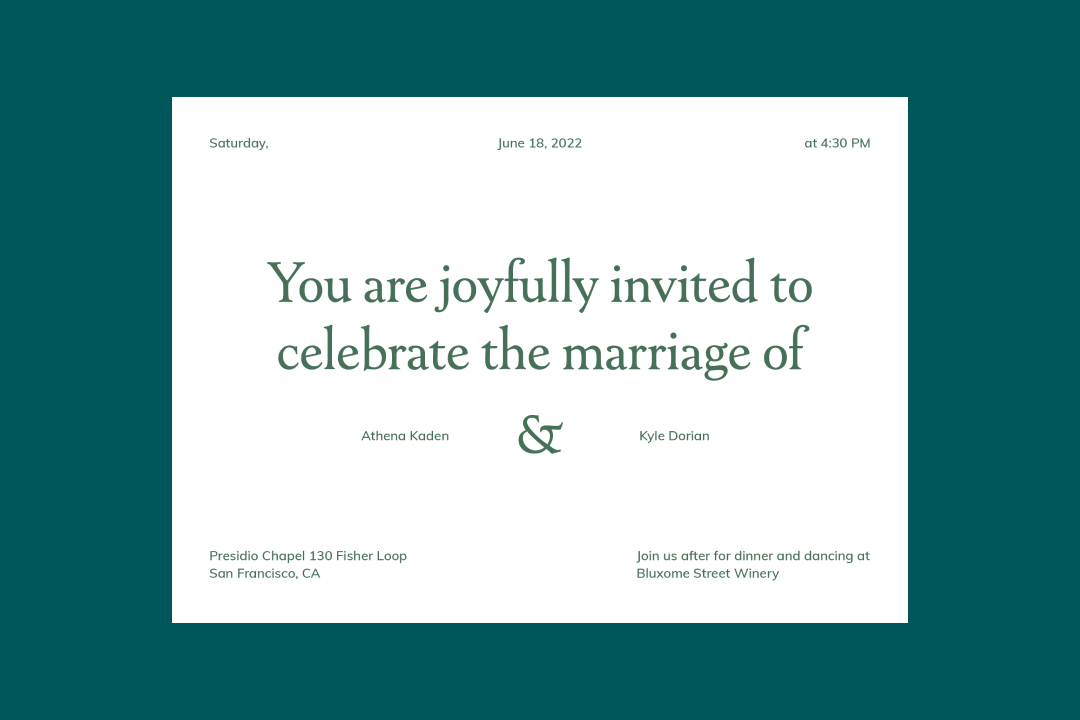
Wedding Invitation Wording: A Complete How-To Guide
How-To
Learn the how-to's of wedding invitation wording, plus formal and casual wedding invitation examples from the experts.
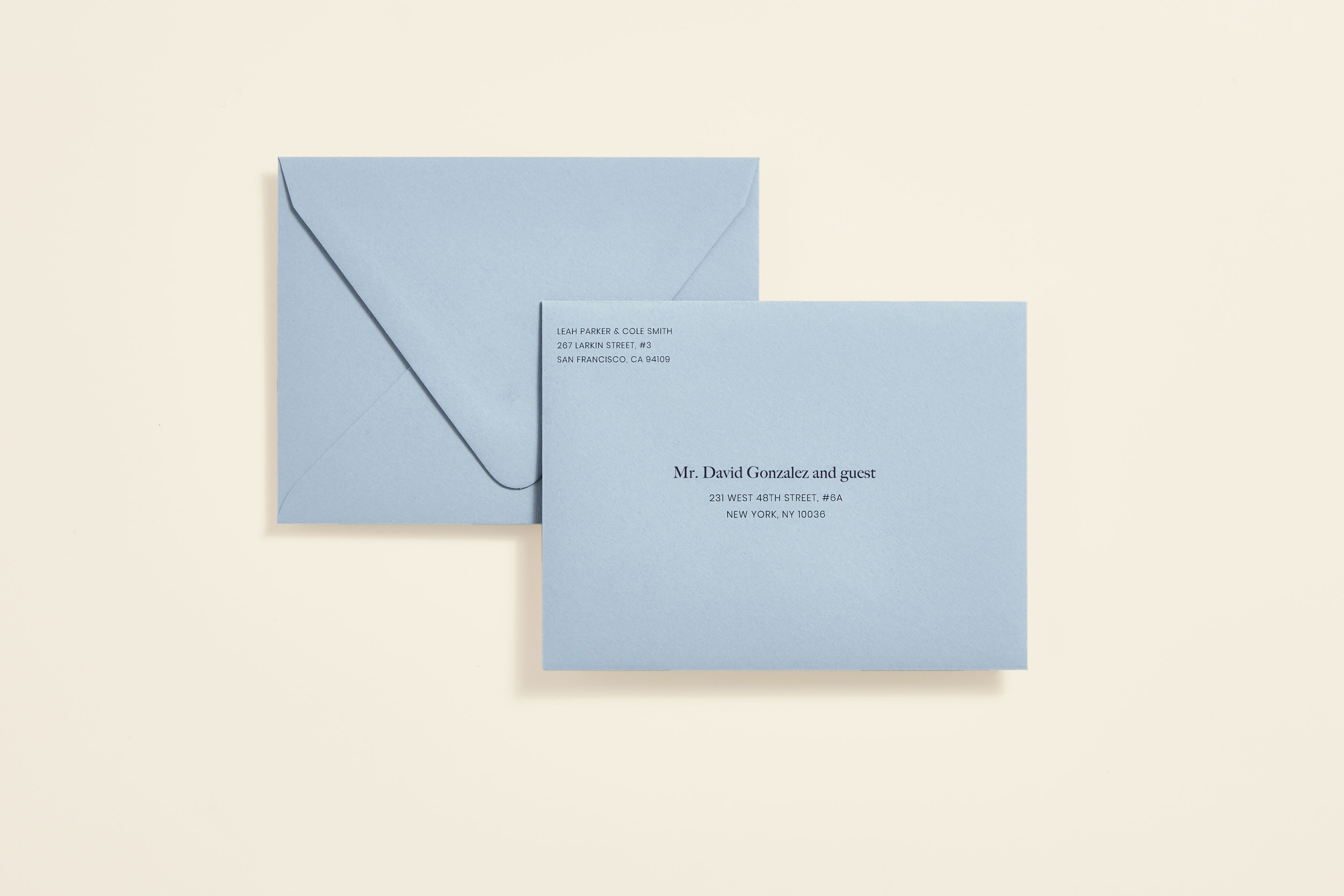
How to Address Wedding Invitations: Etiquette & Examples
How-To
Master the art of addressing wedding invitations with proper etiquette. Learn formal and modern approaches to create elegant and inviting cards.

When to Send Out Wedding Invitations
Inspiration
When is it too early or too late to send out invites? Find out when to send wedding invitations and everything you need to consider for your planning timeline.

Wedding Invitation RSVP Cards: Wording & Etiquette
Inspiration
Master wedding RSVP card wording and etiquette. Craft the perfect invitations with our guide, ensuring a smooth and organized guest response.

A Guide to Invitation Enclosure Cards
Inspiration
Explore our guide to learn everything you need to know about enclosure cards.
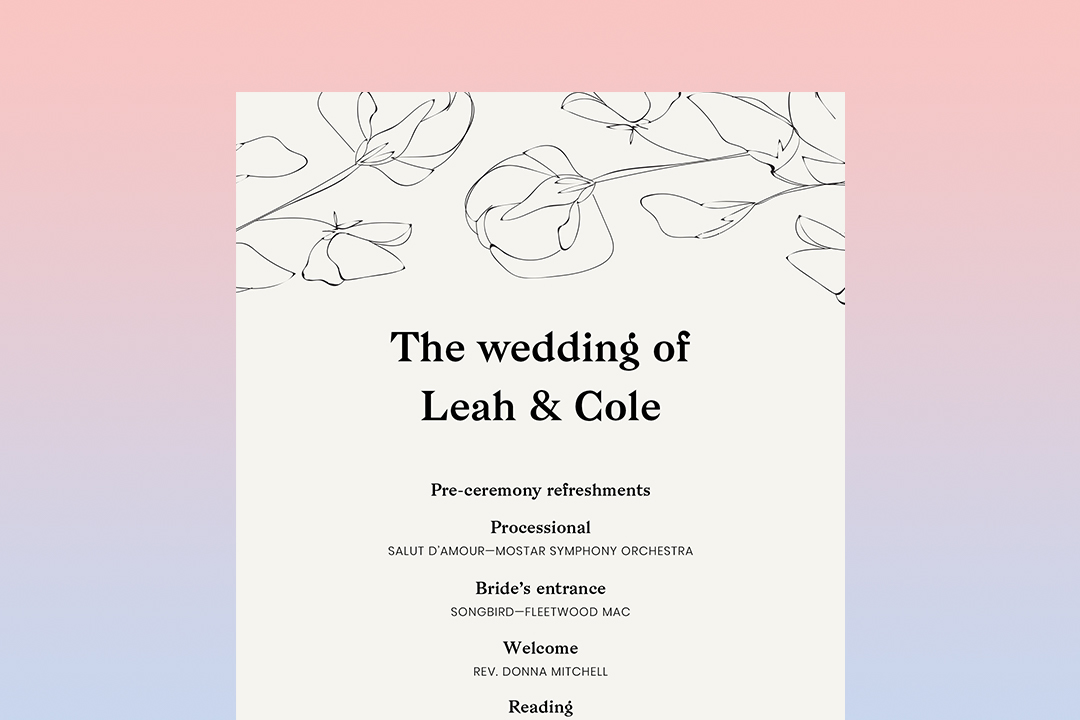
A Guide to Wedding Ceremony Programs
Inspiration
Wedding ceremony programs communicate valuable information to your guests about your ceremony service—find out all you need to know to choose, word, and personalize your wedding programs.
Featured
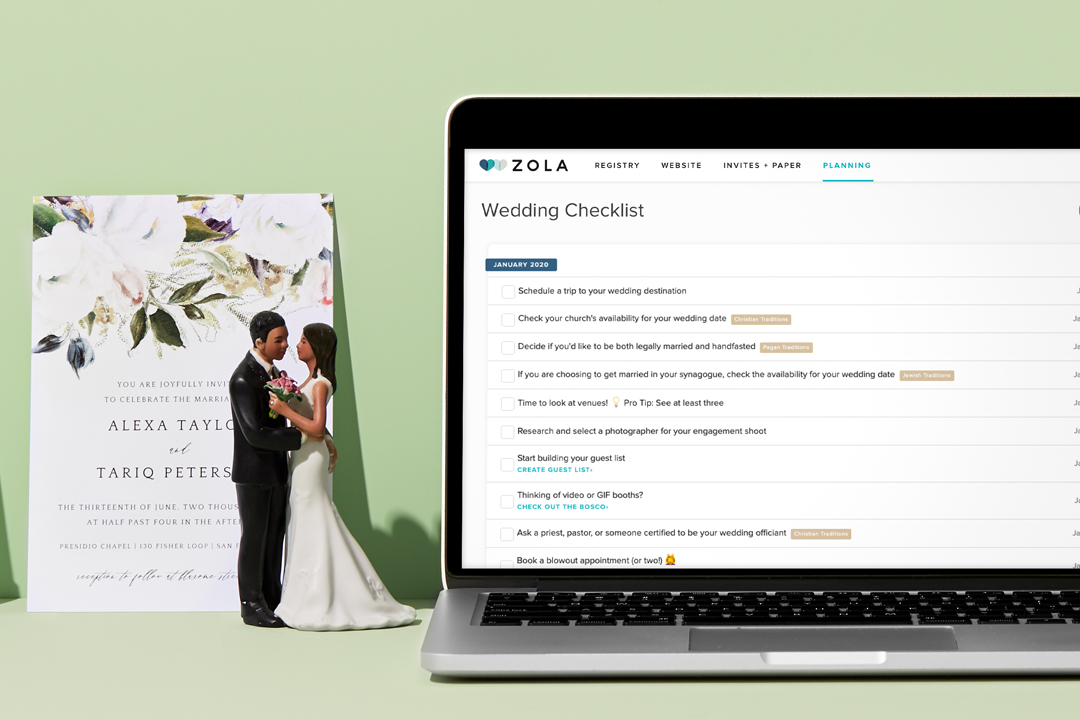
The First 10 Things to Do When Planning a Wedding
How-To
You're engaged—congrats! To help you ease into wedding planning, we’re here with a list of the very first things you should do once you get engaged.

How much does the average wedding cost in 2025?
Advice
Stay within your wedding budget! See average wedding cost breakdowns by state, guest size, and vendor service, plus money-saving tips from the experts.

How to Set Your Wedding Budget Step by Step
How-To
While it may not be the most exciting item on your to-do list, setting your wedding budget is essential. We’ll break down the typical expenses, guide you through the entire process from start to finish, and tell you where you can save money.
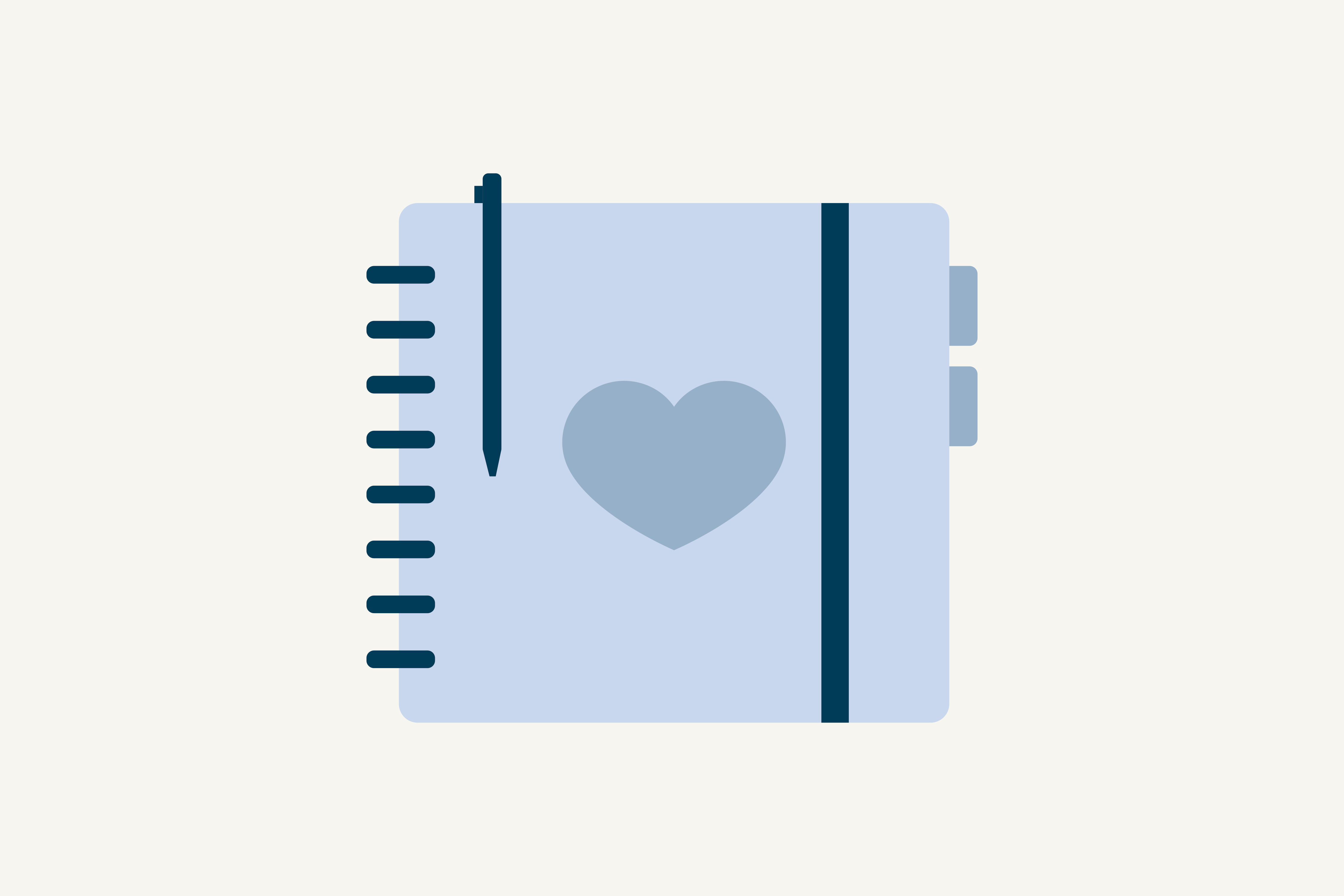
How to Plan a Wedding: A Step-by-Step Guide
How-To
We’ll walk you through the steps of online wedding planning, highlighting all of Zola’s incredibly easy and intuitive online wedding planning tools that’ll make planning for the big day more fun and less frustrating.
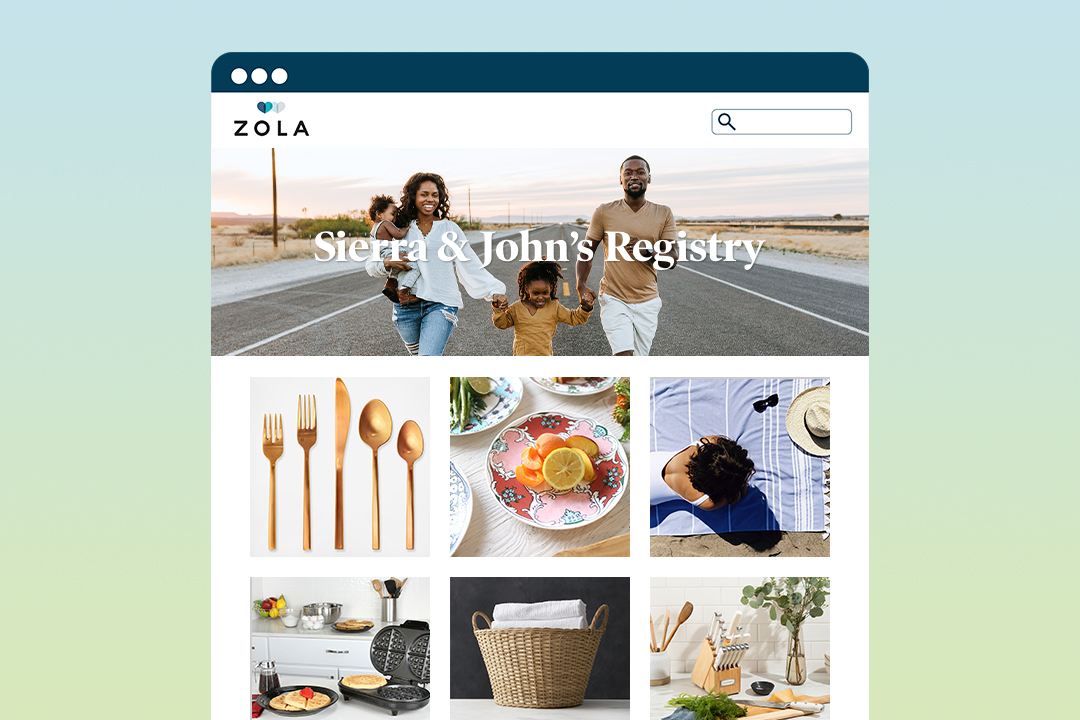
How to Create a Registry if You Already Live Together
How-To
We're here to tell you why building a wedding registry is still really necessary, regardless of whether you live together before marriage.
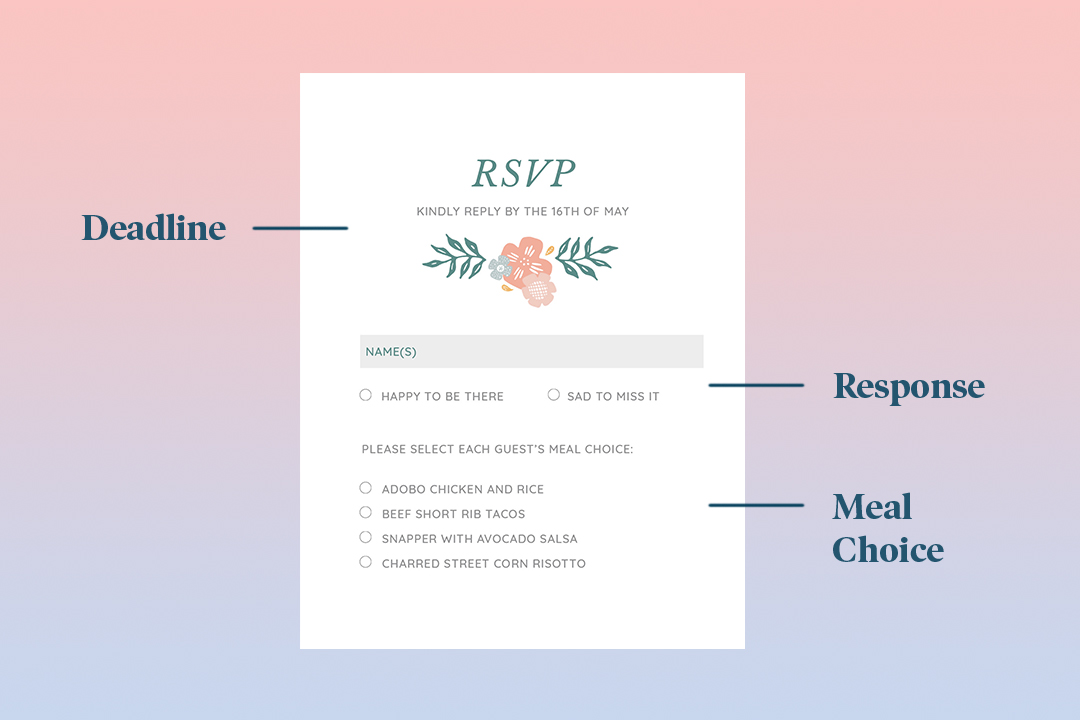
How to RSVP to a Wedding
How-To
If you've received an invitation to a wedding and you're not sure how exactly to respond? This is our guide to wedding RSVP etiquette, tips, and steps.
- Expert advice/
- Invites & paper/
- Invitations/
- How Much Do Wedding Invitations Cost on Average?
Find even more wedding ideas, inspo, tips, and tricks
We’ve got wedding planning advice on everything from save the dates to wedding cakes.
